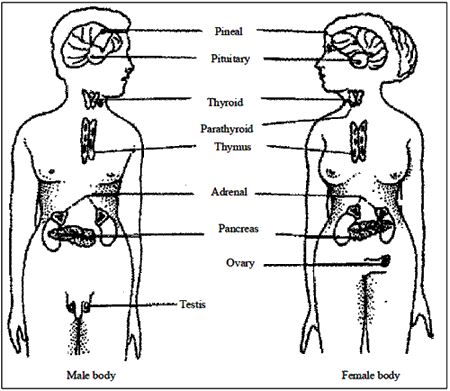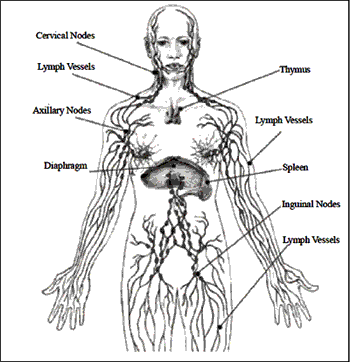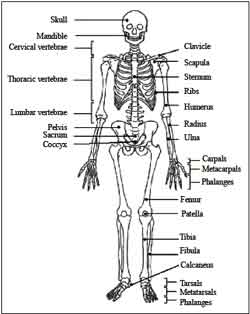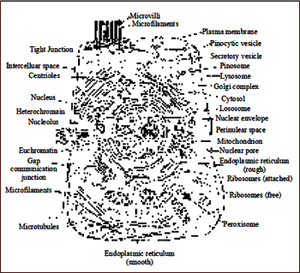Biology
Tissue
Tissue is a cellular organizational level intermediate between cells and a complete organism. Hence a tissue is an ensemble of cells not necessarily identical, but fromthe same origin, that together carry out a specific function. Organs are then formed by the functional grouping together of multiple tissues. The study of tissue is known histology.
ANIMAL TISSUE
The structure of animal tissue is directly related to its function. Tissue is groups of cells with a basic structure and function. There are four types of tissues.
TYPE OF ANIMAL TISSUE
- Epithelial tissue
- Connective tissue
- Muscular tissue
- Nervous tissue.
EPITHETICAL TISSUE:
It is a tissue that is made up of tightly packed cells. Without much materials with in these cells. The reasons for the tightly packed cells are to act as a barrier against mechanical injury, invading micro- rganisms and fluid loss. We can define epithetical tissue by considering two points in mind one is the number of cells layers and two the shape of the cells.
(i) On the basis of cell layers
(a) When an epitheliumhas a single layer of cells it is called a simple epithelium.
(b) Where as a multiple tier of cells are known as stratified epithelium.
(ii) On the basis of simple shape of cells:
- Cuboidal : its occurrence is in kidney tubules, salivery glands, inner lining of the cheek. Its main function is to give mechanical strength.
- Columnar : its occurrence is in sweat gland, tear gland, salivary gland its main function is to gives mechanical strength concerned with secretions.
- Squamous : when it forms a living as that of blood vessels, it is called endothelium. Its main function is to protect the underlying parts from injury, entry of germs, etc.
- Connective tissue : its main function is to bind and support other tissues. They have sparse populations of cells scattered through an extra cellular matrix. This extra cellular matrix is a web of fibers that is woven in a homogeneous ground substance they can be liquid, solid, or jelly like. There are a few types of connective tissue.
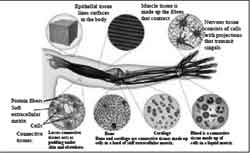
CONNECTIVE TISSUE:

A. Areolar tissue : It fills spaces inside organs found around muscles, blood vessels and nerves. Its main function is to joins skin to muscles, support internal organs, help in the repair of tissues.Where as tendon’s main function is to connect muscles to bones and ligament is connects bones to each other.
B. Adipose tissue : its occurrence is below skin, between internal organs and in the yellow bone Marrow. Its main function is to storage of fat and to conserve heat.
C. Skeletal tissue : Bone & Courtilage cartilage occurrences is in nose pic, epigotis and in intervertebral disc of mammals. Its main function is to provide support and flexibility to body part. Where as bone protects internal delicate organs provides attachments for muscles, bone marrow makes blood cells.
D. Fluid tissue : Blood & Lymph blood transport O2 nutrients, hormones to tissues and organs. Where as leucocytes fight diseases and platelets help in cloting of blood. Lymph transport nutrients into the heart and it also forms the defense system of the body.
MUSCULAR TISSUE:
It is specialized for an ability to contract muscle cells. These are elongated and referred to as muscle fibers. When a stimulates is received at one end of a muscle cell, a wave of excitation is conducted through the entire cell so that all parts contract in harmony. There were three types of muscle cells: skeletal, cardiac, and smooth muscles.
Muscular tissue:
- skeletal
- cardiac
- Smooth muscle tissue.
A. Skeletal muscle : It attached primarily to bones. Its main function is to provide the force for locomotion and all other voluntary movements of the body.
B. Cardiac muscle : It occurs only in the heart. The contraction and relaxation of the heart muscles help to pump the blood and distribute it to the various parts of the body.
C. Smooth muscles : It can be found in stomach, intestines, and blood vessels these muscles cause slow and prolonged contractions which are involuntary.
D. Nervous tissue : This tissue is specialized with a capability to conduct electrical impulses and convey information from one area of the body to another. Most of the nervous tissue (98%) is located in the central nervous system. The brain and spinal cord. There are two types of nervous tissue neurons and neuroglia.
NERVOUS TISSUE:
Neurons: it actually transmit the impulses, receptor nerve ending of neurons react to various kind of stimuli and can transmit waves of excitation from the farthest point in the body to the central nervous system. You will read all the details in Chapter Four.
Important facts regarding animal tissue:-
- Muscles contain special protein called contractile protein. Which contract and relax to cause movement.
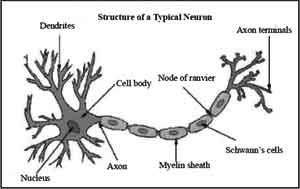
- Fat storing adipose tissue is found below the skin and between internal organs.
- Two bones are connected to each other by a tissue called ligament. This tissue is very elastic.
- The skin, the living of the mouth, the living blood vessels, kidney tubules are allmade up of epithelial tissue.
- Voluntary muscles and cardiac muscles are richly supplied with water where as involuntarymuscles are poorly supplied with blood.
- Muscles tissue is composed of differtiated cells containing contractile protein.
PLANT TISSUE:
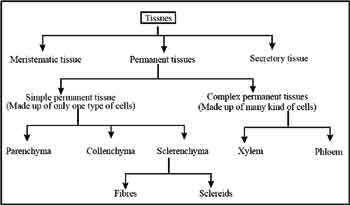
INTRODUCTION
Plants are composed of three major organ groupsroots, stems and leaves. These are comprised of tissue working together for a common goal (function). In turn tissues are made up of number of cells which are made of elements and atoms on the most fundamental level. Plant tissue can be divided differently into two types:
- Permanent tissues
- Meristematic tissue.
1. Permanent tissue : plant tissue are characterized and classified according to their structure and function. These tissues can be simple, consisting of a single cell type. They can also be complex, consisting of more than one cell type. These tissues are incapable of cell division. Therefore these tissues are called permanent tissue.
Types of Permanent tissue
A. Simple permanent tissue : These are of three types.
- Parenchyma
- Collenchyma
- Sclerenchyma
(i) Parenchyma :
- It occurs in all soft parts of plants like cortea of roots and is meant for storage of food and provides turgidity to softer parts of plants.
- Certain parenchymatous tissues contain chloroplast and synthesize food.
- In aquatic plant parenchymatous cells are stellate and have air cavities between them to store air, such tissue is called aerenchyma.
- The outermost protective layer of plants is made up of specially modified parenchyma. These cells are without intercellular spaces.
(ii) Collenchyma :
- It occurs in hypodermis of stemand petiole and around veins.
- Generally it is absent in roots, leaves and monocot stems
- This tissue provides mechnical support and in some cases it may possess chloroplasts to perform photo synthesis.
(iii) Sclerenchyma :
- It is a tissue of dead and thick walled cells having no intercellular spaces.
- It is the chief mechanical tissue in plants and is able to bear push, pull, strain and shearing forces. They are of two types.
- Selerenchyma fibres
- Sclereids or stone cells.
Selerenchyma fibres : they usually occur as patches in pericylcle of dicotstem and within xylem and phloem. These are source of natural fibres like jute, coir, hemp, Levin etc.
Sclereids or stone cells : they occur in hard covering of seeds shell of nuts, endocarp of stung fruits, bark and pith of certain plants. They provide stiffness to part where they occur.
B. Complex permanent tissue : complex tissues are made up of more than one type of cells. All these cells coordinate to perform a common function. Xylemand phloemare examples of such complex tissue.
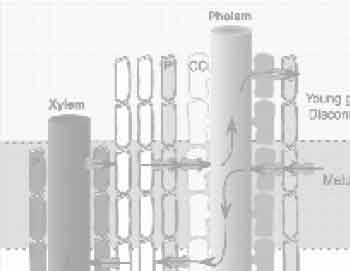
i. Xylem
ii. Phloem
(i) Xylem :


